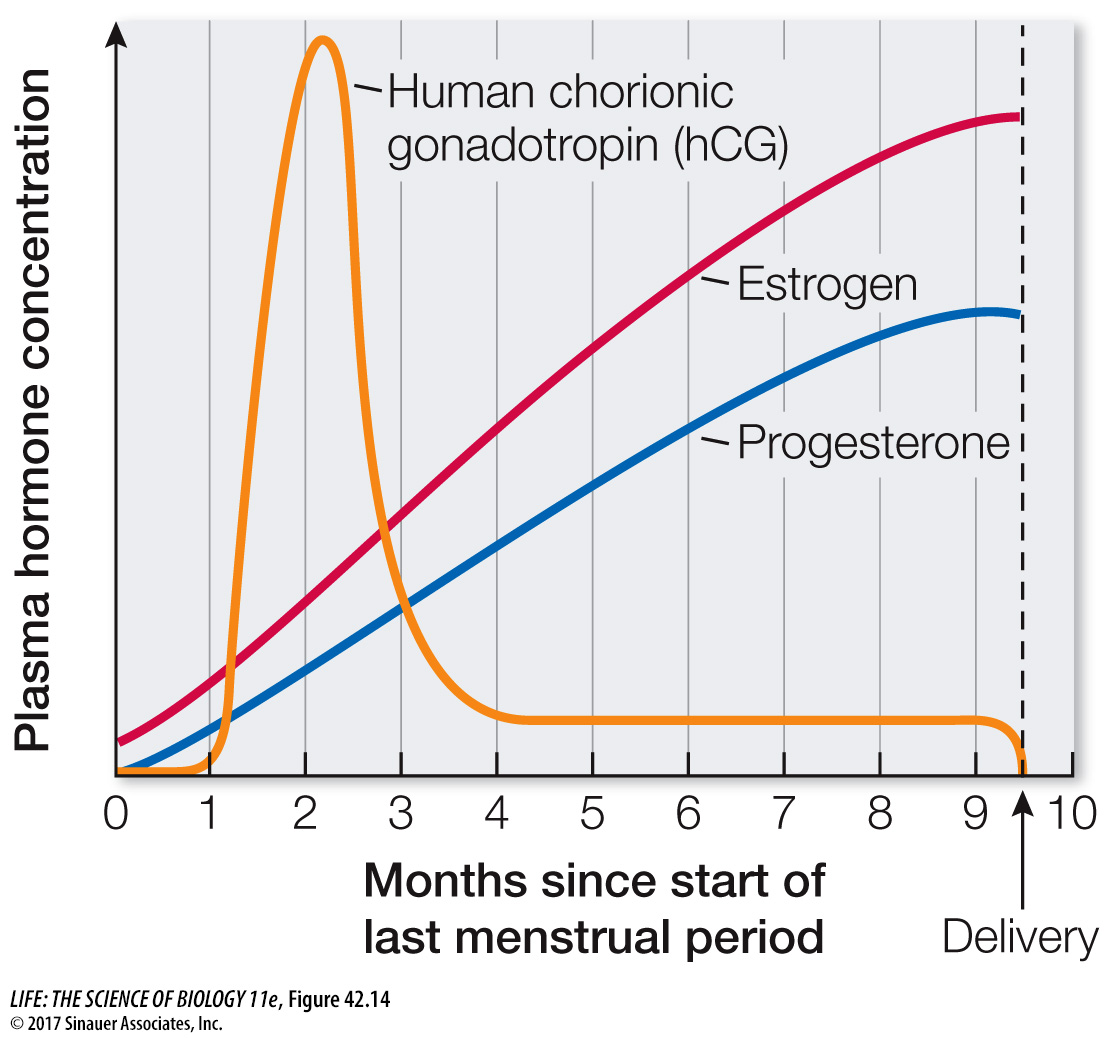In pregnancy, hormones from the extraembryonic membranes take over
908
If the egg is fertilized and a blastocyst arrives in the uterus and implants in the endometrium, a new hormone comes into play. A layer of cells covering the blastocyst begins to secrete human chorionic gonadotropin, or hCG (Figure 42.14). This gonadotropin, a molecule similar to LH, stimulates the corpus luteum to continue to produce estrogen and progesterone to support the growth and maintenance of the endometrium and thereby prevent menstruation. Because it is present only in the blood of pregnant women, the presence of hCG is the basis for pregnancy testing. Pregnancy tests use an antibody to detect hCG in urine; they take only minutes and can be done at home.

Blastocyst and endometrial tissues form the placenta, which nourishes the embryo. The placenta also replaces the corpus luteum as the major producer of estrogen and progesterone. Continued high levels of estrogen and progesterone prevent the pituitary from secreting gonadotropins; thus the ovarian cycle ceases for the duration of pregnancy. This mechanism underlies the action of birth control pills, which contain synthetic hormones resembling estrogen and progesterone that exert negative feedback control on the hypothalamus and pituitary.